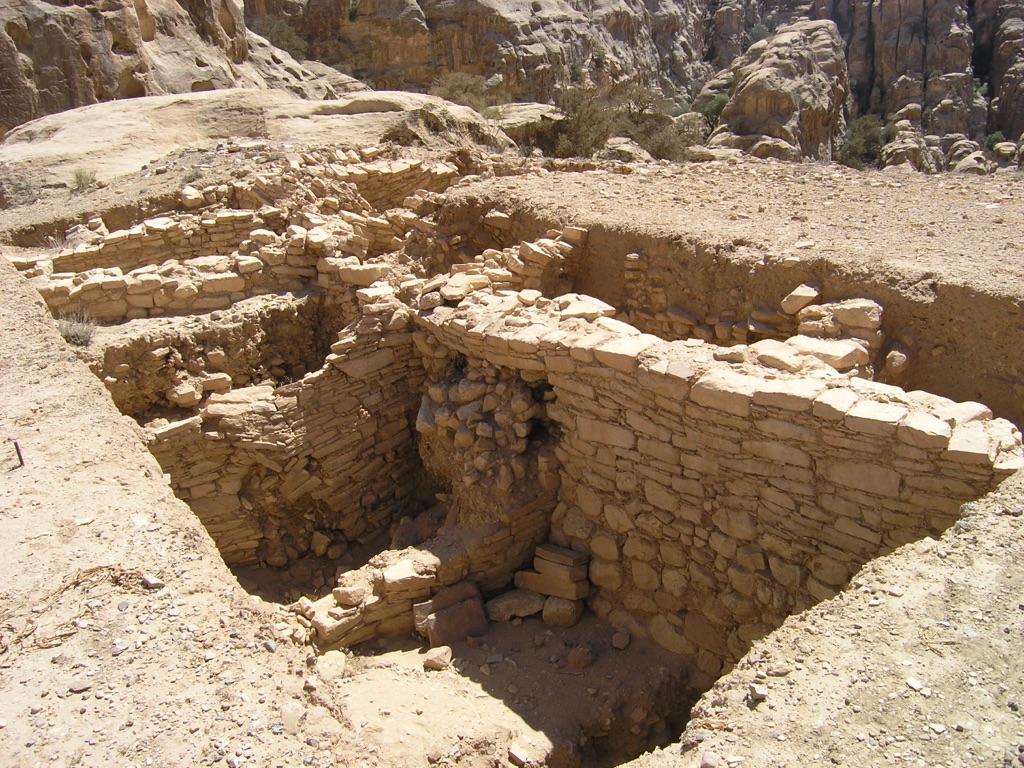The Ba’ja Archaeological Site is a significant Neolithic settlement in Jordan. It offers a glimpse into early human civilization. The site is nestled in the rugged hills north of Petra. It provides valuable insights into the lifestyles of the people who lived there. Ba’ja is known for its well-preserved stone architecture. It includes houses with rooms, courtyards, and storage areas. The site has yielded numerous artifacts. These include pottery, tools, and a notable amount of jewelry. Ba’ja is a key location for understanding the transition from nomadic to sedentary lifestyles in the Near East.
Get your dose of History via Email
Historical Background of Ba’ja Archaeological Site
Discovered in the 1980s, Ba’ja is a testament to human ingenuity. It was unearthed by archaeologists Diana Kirkbride and Brian Byrd. The site dates back to the Pre-Pottery Neolithic B period. This was a time of significant development in human history. The inhabitants of Ba’ja were among the first to practice agriculture. They also domesticated animals. The site’s strategic location provided security and access to resources. Over time, Ba’ja was abandoned. Yet, it remains a crucial piece of the historical puzzle. It helps us understand the evolution of human societies.
Who built Ba’ja remains a topic of research. Yet, it is clear that a complex society thrived here. They built multi-story structures and engaged in trade. The site’s inhabitants later abandoned it. The reasons for this are still under investigation. Ba’ja’s history is not marked by any known significant historical events. However, its existence is crucial. It helps us understand the daily lives of people during the Neolithic era.
The discovery of Ba’ja has not only provided physical structures. It has also offered a wealth of artifacts. These artifacts give us a peek into the past. They show us the cultural practices of its inhabitants. The site’s preservation allows for detailed study. This study sheds light on the architectural and social patterns of the time.
While Ba’ja was not the scene of any famous historical events, its significance lies in its ordinariness. The site offers a snapshot of everyday life. It shows us the transition from hunter-gatherers to settled communities. This transition is a cornerstone of human history. Ba’ja’s contribution to our understanding of this period is invaluable.
The site’s excavation has been meticulous. It has involved international teams of archaeologists. Their work has been instrumental in piecing together the site’s history. The ongoing research at Ba’ja continues to reveal new information. This information enriches our understanding of the Neolithic era in the Near East.
About Ba’ja Archaeological Site
Ba’ja is an architectural marvel of the Neolithic era. The site features stone-built structures. These structures are well-preserved. They include multi-room houses, courtyards, and intricate alleyways. The buildings were constructed using local materials. These materials include limestone and mud for mortar. The architectural design of Ba’ja reflects a sophisticated understanding of space and community living.
The construction methods at Ba’ja were advanced for their time. The builders used stones carefully shaped and fitted together. This created sturdy walls and platforms. The roofs were likely made of organic materials. These materials have not survived the test of time. The layout of the settlement suggests a high degree of social organization.
One of the highlights of Ba’ja is its storage facilities. These facilities indicate surplus production and trade. The presence of storage areas shows that the inhabitants had moved beyond mere subsistence. They were engaging in the early forms of economic activity.
The site’s buildings also show signs of communal effort. The construction of such complex structures would have required cooperation. This cooperation suggests a tightly-knit community. The inhabitants of Ba’ja lived and worked together closely.
Archaeologists have noted the remarkable preservation of the site. This preservation allows for detailed analysis of the construction techniques. It also provides insights into the Neolithic way of life. The architectural features of Ba’ja continue to be a subject of fascination for researchers and visitors alike.
Theories and Interpretations
Several theories exist about the use and significance of Ba’ja. Some suggest it was a seasonal encampment. Others believe it was a permanent settlement. The abundance of jewelry found at the site indicates it may have been a center for trade or ritual activities.
The mysteries of Ba’ja include the reasons for its eventual abandonment. Climate change, overexploitation of resources, or social upheaval are possible factors. These factors are still being explored by researchers.
Interpretations of Ba’ja have to be matched to historical records. Yet, the site predates written history. This makes such correlations challenging. Instead, researchers rely on material culture and comparative studies with other sites.
Dating of Ba’ja has been carried out using radiocarbon methods. These methods have provided a timeline for the site’s occupation. The results place Ba’ja firmly in the Pre-Pottery Neolithic B period.
The ongoing research at Ba’ja is crucial. It helps us understand the broader patterns of human development in the region. Each artifact and structure adds a piece to the puzzle of our collective past.
At a glance
Country: Jordan
Civilization: Neolithic inhabitants of the Levant
Age: Approximately 7200 – 6500 BC
Conclusion and Sources
Reputable sources used in creating this article include:
- Wikipedia: https://en.wikipedia.org/wiki/Ba’ja

